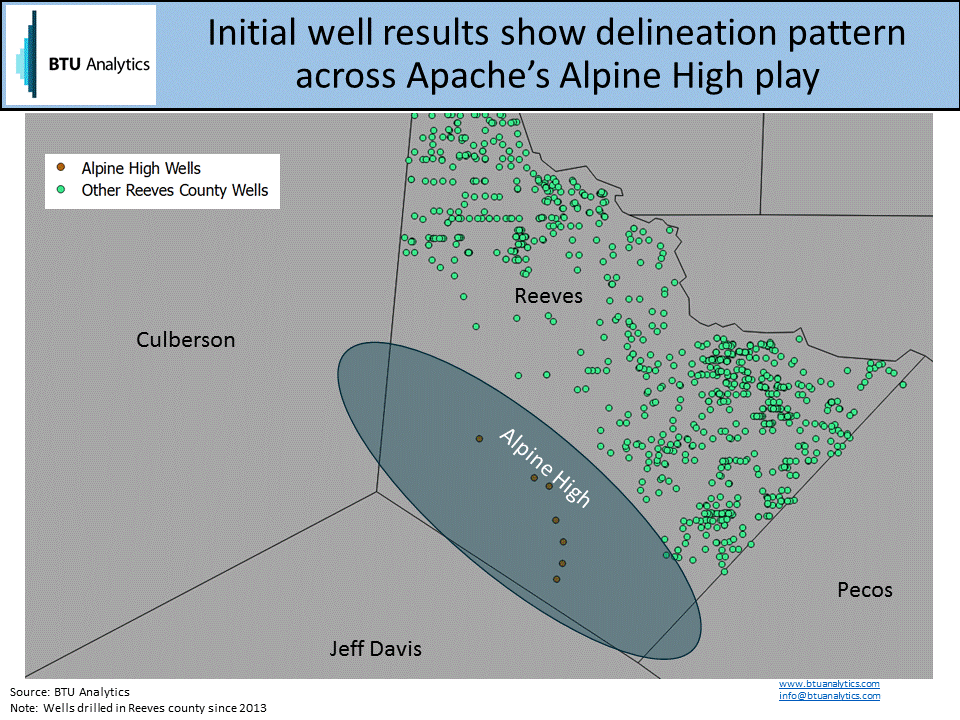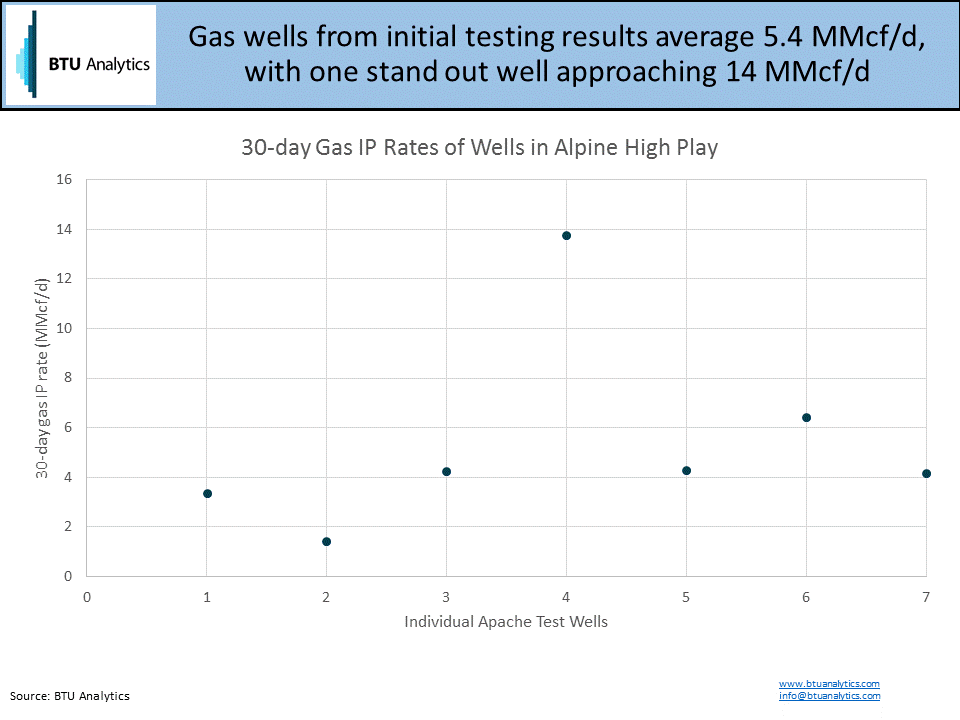Production growth out of the Permian in 2017 and 2018 is coming, and BTU Analytics has previously highlighted the impact to crude oil markets and oil related infrastructure. But how does a major new gas play in the Permian fit in the mix? The first set of Apache’s wells from the previously announced Alpine High play are now available in public datasets, and capital spending plans highlighted in yesterday’s earnings call indicate this may be an impactful play to keep an eye on. But could the timing of development hinder the play’s future potential?
Apache’s recent Alpine High discovery sits in the southern portion of Reeves county, an area where historically the well results have been disappointing and the geology was thought to be too challenging for meaningful economic production. In recent years, this portion of Reeves county has seen essentially no horizontal drilling activity. However, extensive testing and analysis from Apache’s geologists have led them to position themselves on top of over 300,000 acres of what they believe is a prime gas play in Western Texas. So how do the initial results look?

The plot below shows 30-day gas IP rates for 2016 wells falling within Apache’s Alpine High target zone. These 7 wells average 5.4 MMcf/d, and apart from the stand-out well just shy of 14 MMcf/d, don’t quite convey the excitement expected from previous buildup. These first targets saw very little liquids or oil content, averaging 30-day oil IP rates of only 71 b/d.

Apache has pointed out that initial rates might not impress the market, however, lack of infrastructure and flaring rules limit the incentive to drill wells that produce headline grabbing IP rates. New wells reported by Apache in their Q4 release, not included in the analysis above, have shown additional gas wells with 24-hour gas IP rates above 17 MMcf/d, and liquids rich gas wells with 24-hour gas IP rates ranging from 3-5 MMcf/d and BTU content of 1,200 to 1,400. Apache expects to have a 4-6 rig program in the Alpine High this year, and results from those wells are expected to give better insight into the play’s potential as gathering is built out and production history is established.
Perhaps what is more telling than the initial well results is the optimism and capital allocation Apache is committing to Alpine High over the next two years. Apache has laid out $500 MM of spending towards the Alpine High midstream infrastructure in 2017. Apache is increasing their overall capital spending 60% year-over-year as they return to a growth-focused plan, and it is clear that they are making the Alpine High an important part of their portfolio. Production volumes for Alpine High are scheduled to first come to sale in the second half of 2017.
The longer-term timing, however, may not work in Apache’s favor. BTU Analytics’ current market outlook calls for the gas market to be tipping towards being supply long in 2019 as an unconstrained Northeast fights for market share against significant volumes of associated gas from the return of oil-focused drilling. With Apache planning for the real impact of Alpine High production to be felt in 2018 and beyond, this could be a case of poor timing. Unlike the majority of the Permian activity which is driven by oil prices, Alpine High activity should follow changes in gas price and may suffer in a demand constrained market.
If we do see Alpine High development take-off in the Permian, in addition to the increase in associated gas from nearby oil development, where does this create bottlenecks in gas takeaway capacity, processing, or demand? For an in-depth look at anticipated Permian constraints, request a sample of BTU Analytics’ Upstream Outlook Report.









